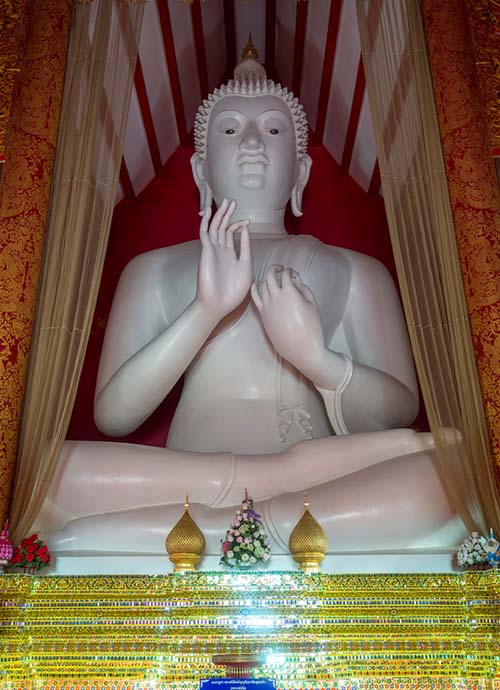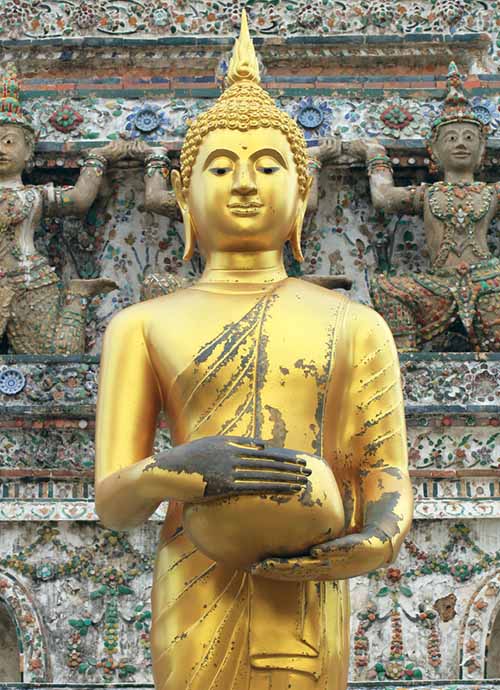
Hand mudras
Meaning & origin of hand gestures on Buddha images
Mudras are ritual gestures depicted on images of the Buddha, usually made with the hand and fingers. While each mudra has a specific meaning, most refer to an event in the life of the Buddha, often depicted in murals in a temple’s viharn or ubosot.
Mudras are depicted on images on all countries with a Buddhist tradition, although there are often variations between countries in the gestures and their meanings. Mudras can be made with the left hand, the right hand or both hands, They are found on seated, standing, walking and reclining images.
The most often depicted mudras
The most often depicted mudras on images of the Buddha are:
- Subduing Mara, also known as Bhumisparsha and “Calling the Earth to witness”
- Abhaya (dispelling fear)
- Vitarka (teaching)
- Dhyana (meditation)
Other mudras
Besides the most commonly depicted, there are dozens more mudras, some of which are very rare.
Buddhapatra, Buddha holding an alms bowl
The Buddhapatra mudra represents the Buddha as a monk collecting alms from the laymen. Usually depicted on standing images, the alms bowl is held with both hands, arms slightly bent at the elbows.
An important event in the life of the Buddha which is often depicted in murals is the time when the Buddha returned from Tavatimsa Heaven where he had taught the Buddhist teachings to his mother, who had passed away and reincarnated in Heaven. When the Buddha had descended from a ladder of jewels he was welcomed by a huge crowd of thousands of people all offering food, placing it into his alms bowl.
To this day monks in Thailand and Burma leave the temple early morning carrying an alms bowl, allowing the laymen to make merit by donating food.
Dharmachakra
Dharmachakra translates to “Wheel of Dhamma”. Both hands are held close together at the chest displaying Vitarka, the right hand palm towards the chest, the left hand palm facing outward.
This gesture refers to one of the most important events in the life of the Buddha. Shortly after having reached enlightenment the Buddha went to Sarnath where he held his first sermon at the deer park thus setting in motion the wheel of Dhamma, the Buddhist teachings.

Varada
The Varada mudra represents giving, charity, offering and gift bestowing. The mudra is made with one hand which is lowered, palm open, fingers either bent upwards or pointing downwards.
A picture of perfect charity is depicted in one of the Jataka tales, the stories that tell about the previous lives of the Buddha. The story tells of a prince who gives away all his possessions including his two children, thus displaying the virtue of charity.
Anjali
Anjali represents respect and devotion. It is never depicted on the Buddha himself. The palms and fingers of both hands are pressed together pointing upwards, held at chest level or higher. The gesture known in Thailand as “wai” is used today in everyday life as a greeting and sign of respect.
More mudras
Some other often seen mudras are:
- Subduing Mara (“Calling the Earth to witness”)
- Vitarka (Teaching)
- Dhyana (Meditation)
- Abhaya (Dispelling fear)